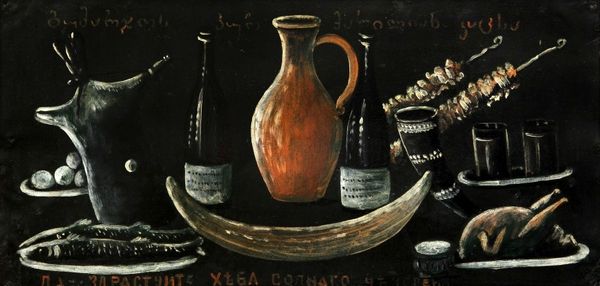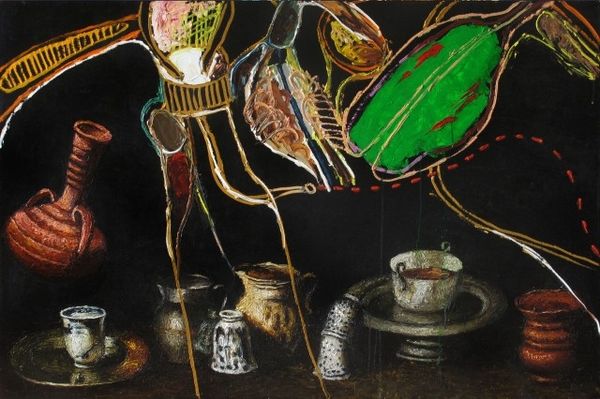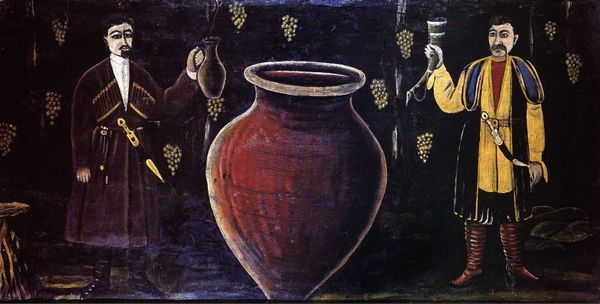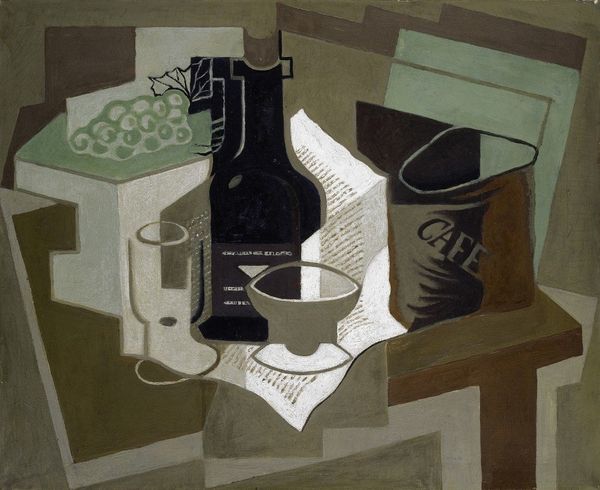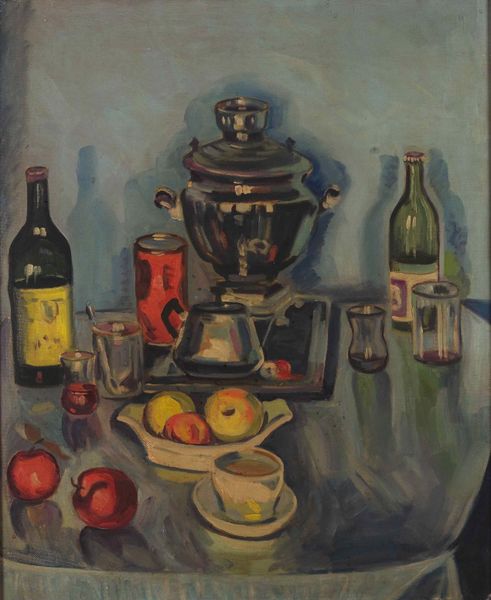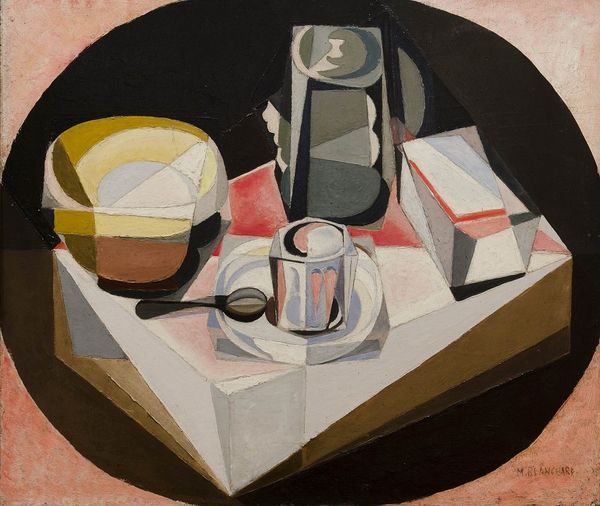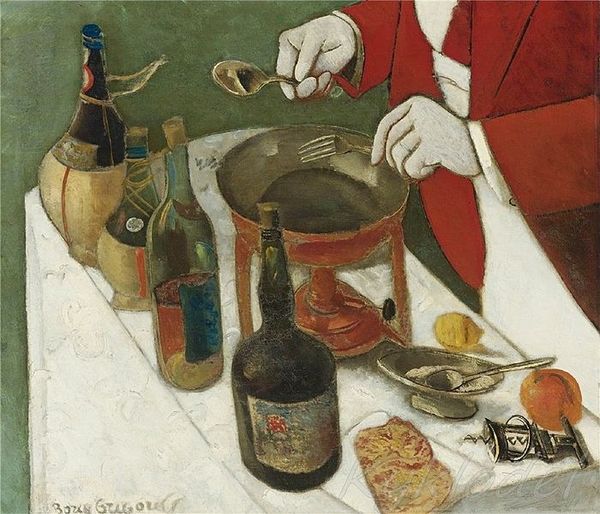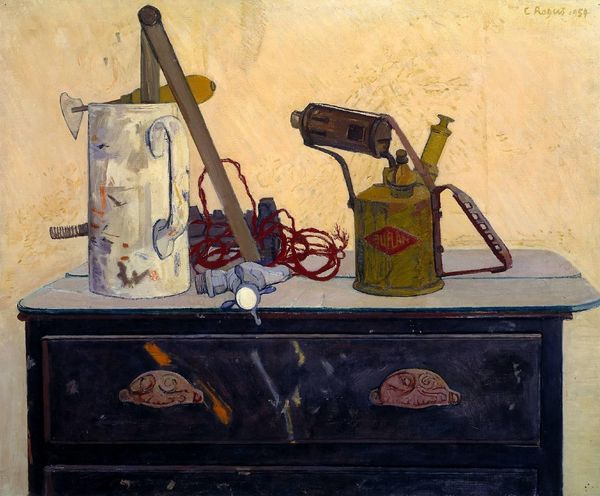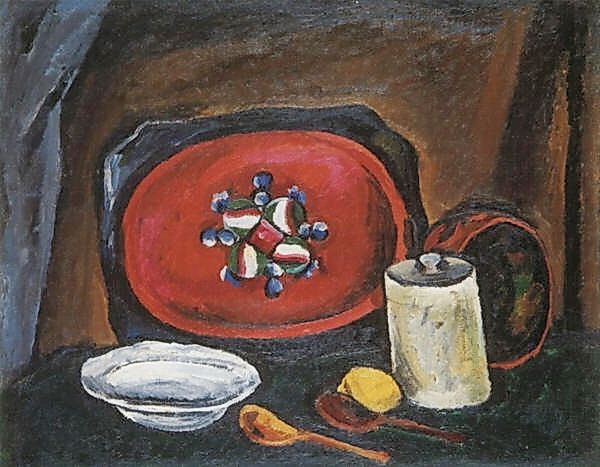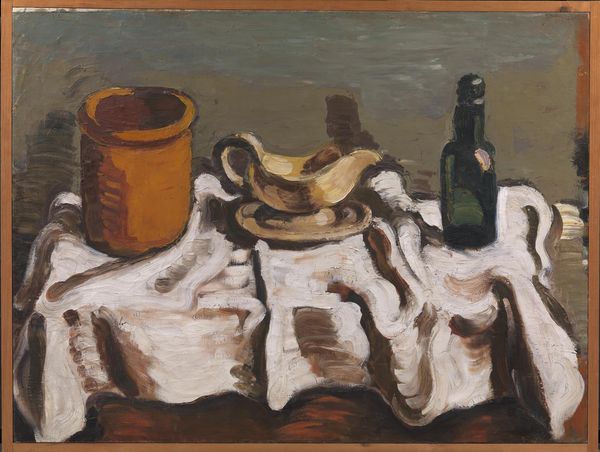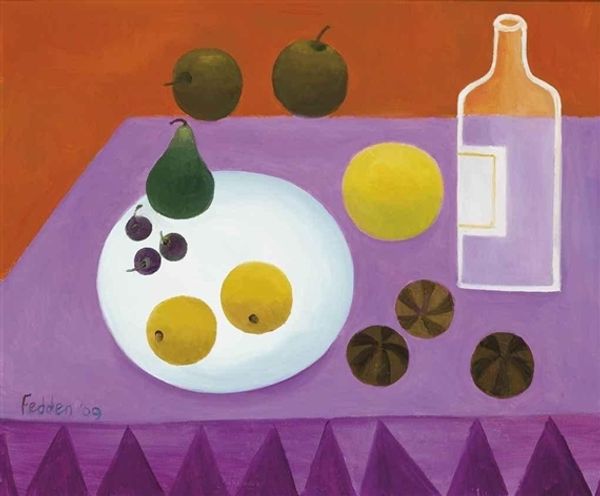
painting, photography
#
still-life
#
painting
#
photography
#
folk-art
Dimensions: 40 x 80 cm
Copyright: Public domain
Curator: Oh, I find this Still Life so intriguing. Its attributed to Niko Pirosmani, although exact dates for his pieces are often elusive. Editor: Mmm, it has the kind of raw honesty that just stops you in your tracks, doesn’t it? Like a forgotten family snapshot, brimming with stories, and just a touch melancholic, no? Curator: Indeed. What strikes me immediately is its seemingly deliberate crudeness, almost as a kind of naive painterliness—an unrefined style with profound socio-cultural roots within the era and society that fostered such creation. The use of commonplace subjects also reflects that folk-art tendency to portray elements that are easily and widely relatable. Editor: Absolutely. There's an immediate feeling of a modest, intimate feast about to happen—a pre-celebration vibe, like before an Orthodox Easter, full of shared culture, history and personal significance. I'd bet this piece tells us something about what real meals looked like outside fancy drawing rooms in the time it was created. What do you think the lettering tells us? Curator: I believe they reference the holiday in question and likely offer blessings in a similarly religious sense. This, alongside the various meal staples showcased as almost central figures, definitely supports that reading. I can also appreciate Pirosmani depicting specifically lower-class customs, especially given the political contexts for working-class Georgians at the time. Editor: I almost get the sensation he wanted you to *taste* what you're looking at, to smell that Easter bread, and that slightly musty-basement wine... There is even fish present. Such bold rawness invites you right in there alongside them, almost in defiance of traditional academic sensibilities. Curator: That contrast is really at the heart of his appeal—defiance made beautifully palatable and publicly digestible. Its enduring legacy also offers invaluable cultural insights into what it means to recontextualize what fine art and the role of the artist are in general. Editor: Precisely. Art is often about bridging worlds, and with such unpolished directness, this artwork creates an intimate bridge between the highbrow and lowbrow elements of the then cultural climate. Curator: Indeed. Such synthesis truly solidifies its ongoing impact as well as its relevance to even modern artistic commentary. Editor: So here's to folk-art, to honest expressions and to never being afraid of things not so polished!
Comments
No comments
Be the first to comment and join the conversation on the ultimate creative platform.
